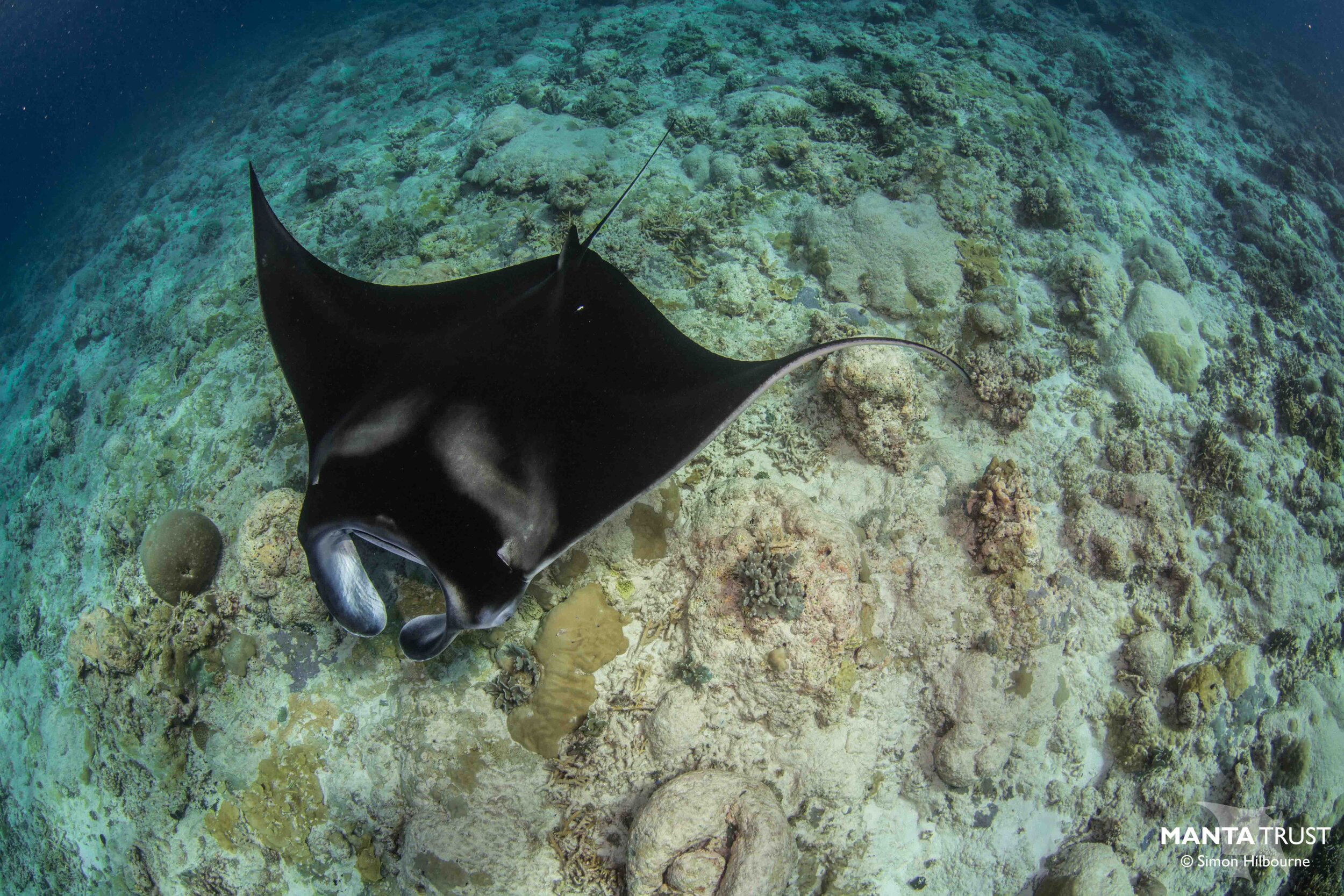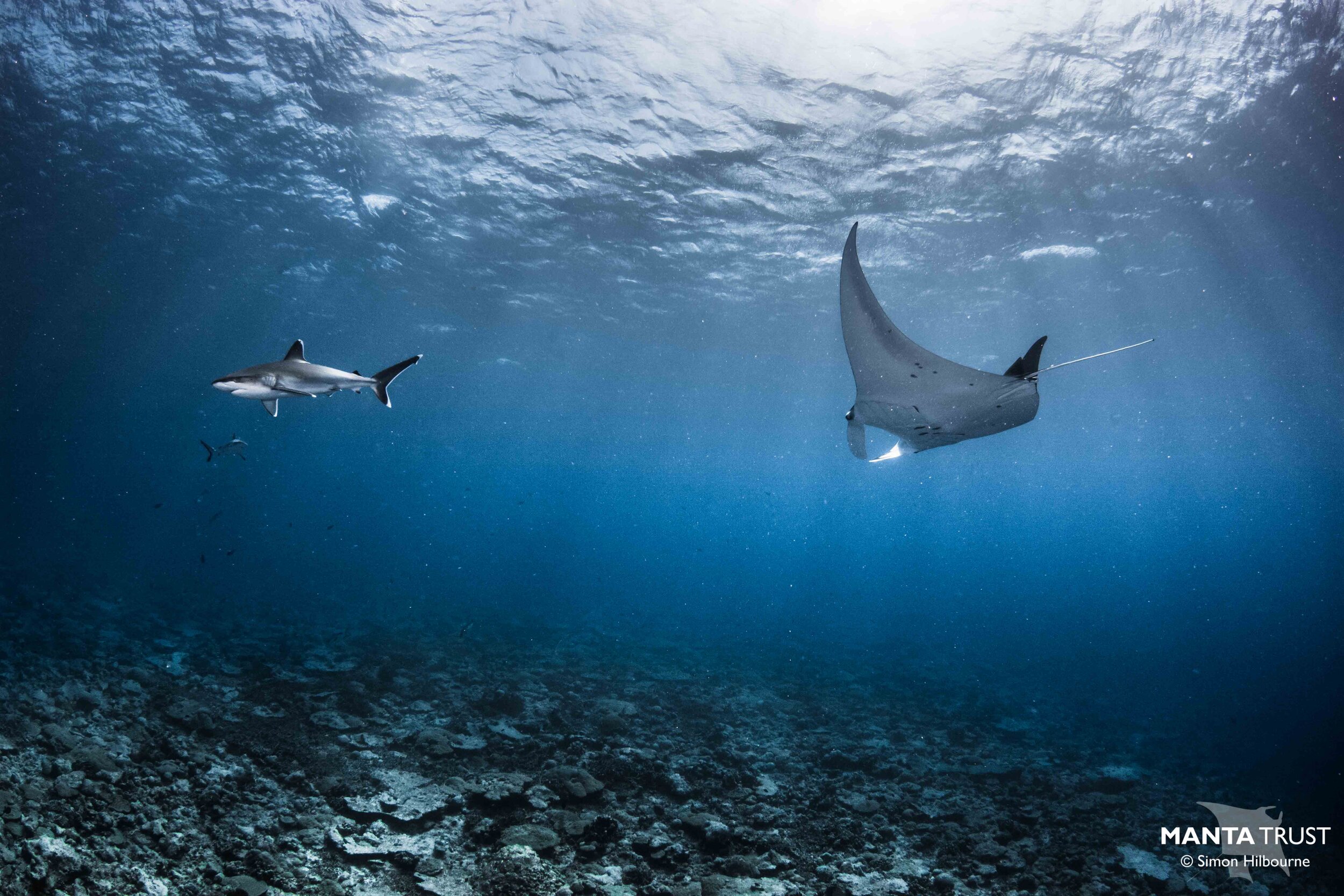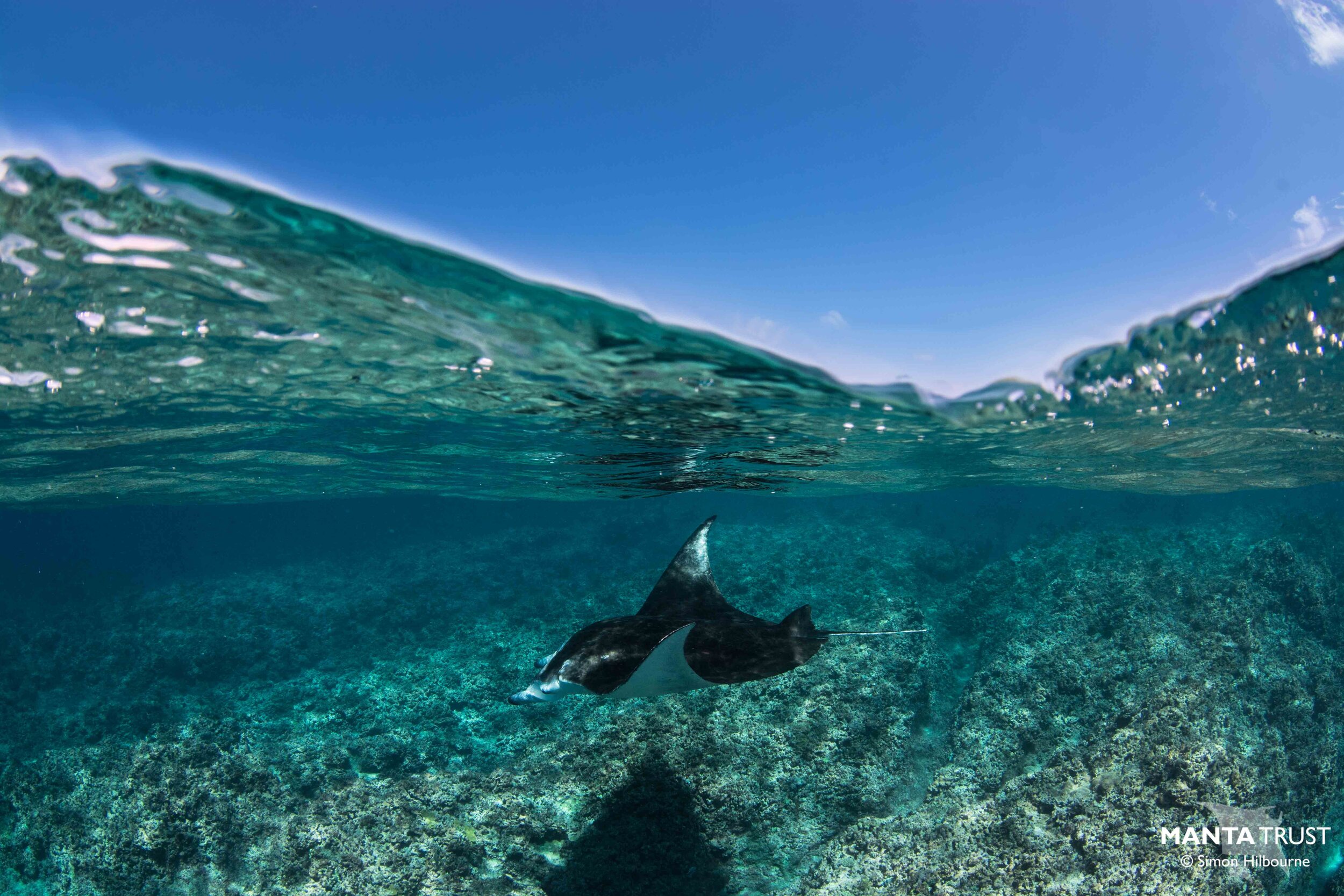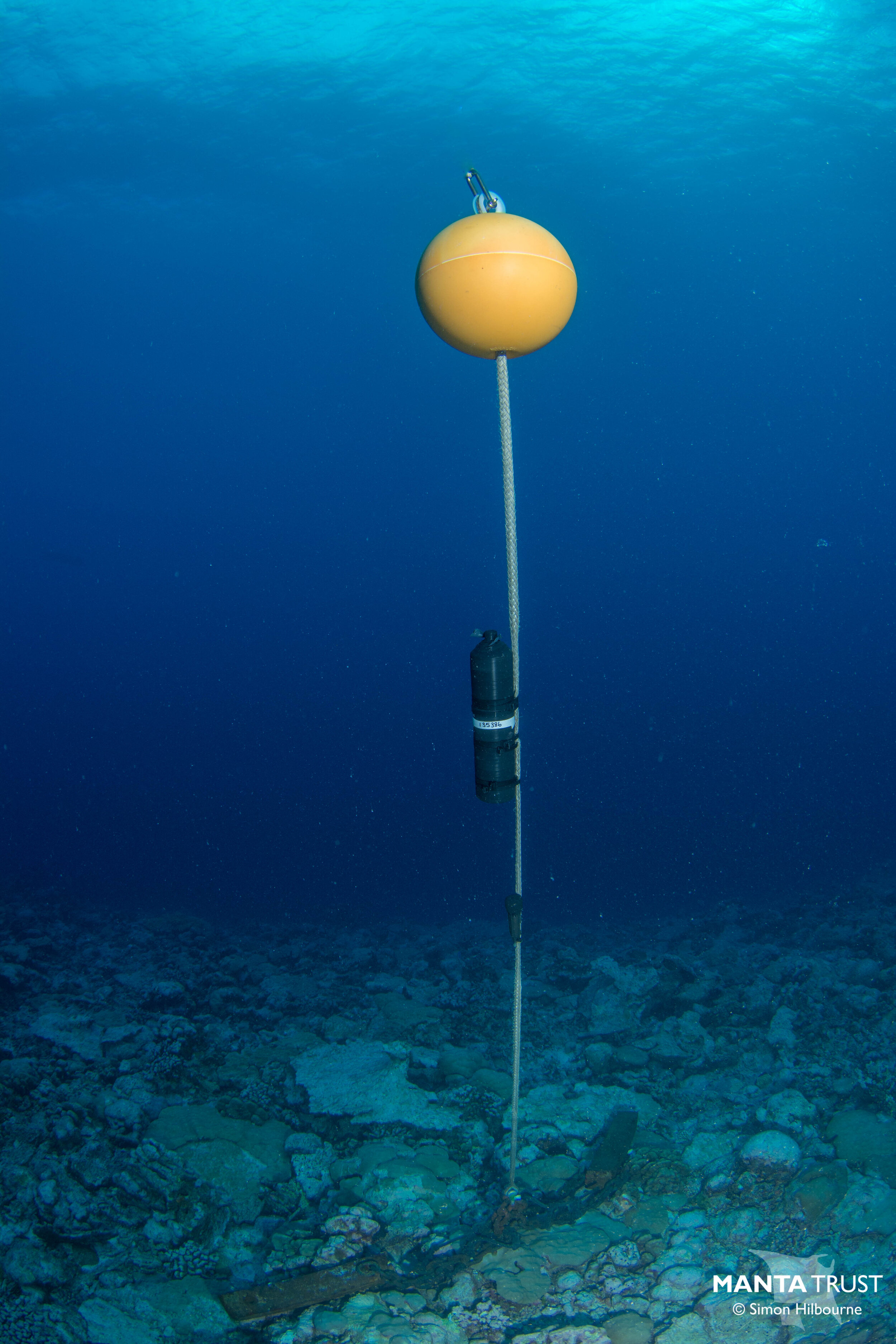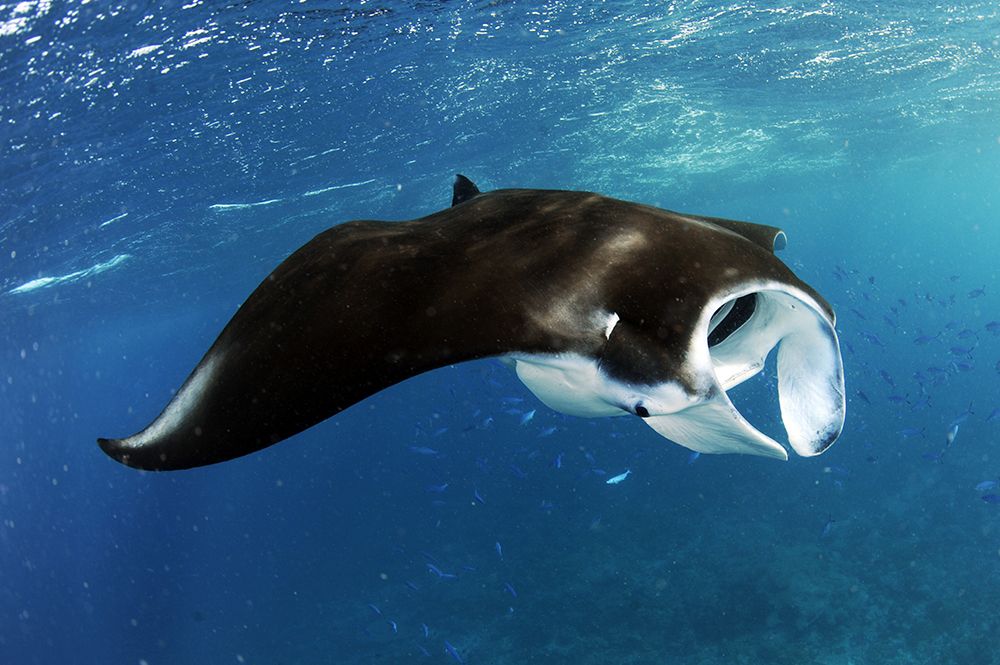
PROJECT OVERVIEW
To be able to develop effective protection strategies for reef manta rays throughout the world, it is essential that we understand the functioning of a natural marine ecosystem. Under overwhelming human pressures such as tourism, large-scale fisheries and habitat degrading activities which may distort natural ecosystem functioning, few such marine environments exist making the establishment of a natural baseline challenging.
The Chagos archipelago comprises a group of seven atolls, located 500 km south of the Maldives in the Indian Ocean. The region has been uninhabited since 1970 (except for military personnel on Diego Garcia Atoll), and in April 2010, the British government established the entire archipelago as a Marine Protected Area (MPA). Spanning an area of 640,000 km2, it is the second largest MPA in the world. In the absence of human pressures, the area is host to one of the world’s most pristine marine environments where ecosystem functioning is in a near-natural state. This makes the little known population of reef manta ray in the region unique as they are protected from some of the most threatening human stressors.
As a remote, virtually uninhabited and strictly protected location it is not possible to have a local field base, so since the establishment of the Manta Trust’s Chagos Manta Ray Project (CMRP), research has been conducted in carefully planned stages. Various successful techniques have been employed including photographic identification and satellite tagging to gather data on the population’s size, demographics, movement ecology and feeding behaviour.
Tracking Reef Manta Rays
Reef manta rays are among the most conspicuous mobulid species in the Chagos Archipelago, making them a priority for conservation. Understanding the areas where they are most vulnerable to illegal fishing is crucial for their long-term protection. To support this, one of CMRP’s key objectives has been the deployment of Fastloc-GPS Argos satellite tags, with support from the Bertarelli Foundation. These state-of-the-art devices collect detailed information on location, diving behaviour, and movement patterns, allowing CMRP to build a clearer picture of habitat use and migration across the region.
By sharing these insights with marine spatial planners, CMRP contributes to the identification of critical habitats and areas in need of enhanced protection. So far, satellite tagging has uncovered seven previously unknown feeding hotspots and a number of important migratory corridors. Dive data further suggests a strong association with mesopelagic ecosystems—deep-water habitats that are increasingly targeted by fisheries. This highlights the urgent need to prioritise these zones in future spatial management strategies.
Mobulid Identification Workshops
A recent review of illegal catch records has revealed previously undocumented cases of illegal fishing involving three mobulid species: the sicklefin devil ray (Mobula tarapacana), bentfin devil ray (Mobula thurstoni), and spinetail devil ray (Mobula japanica). These oversights were largely due to limited resources and a lack of taxonomic training among those responsible for recording catch data.
To address this, CMRP launched the Mobulid Ambassador Scheme, funded by Darwin Plus Local. The initiative aims to build local capacity to accurately identify mobulid species and record both illegal catches and live sightings. Training activities were focused on Diego Garcia, the only inhabited island in the Chagos Archipelago and home to a UK-US military base.
A group of individuals were selected to become Mobulid Ambassadors. This group reflects diverse sectors across the the Diego Garcia community and includes enforcement personnel, long-term contractors from the Philippines and India, and short-term residents from the UK and US military, the Foreign, Commonwealth & Development Office (FCDO), and the Royal Overseas Police Officers.
Since its launch, the ambassador network has provided vital data for fisheries enforcement and habitat identification, supporting ongoing efforts to protect manta and devil ray species across the Chagos Archipelago.
Project Leader Dr Joanna Harris conducting a Mobulid Identification Training Workshop.
Group photo of the first cohort of Chagos Mobulid Ambassadors.
Egmont Atoll ISRA Designation
Project Leader Dr. Joanna Harris’s PhD research focused on the spatial and temporal patterns of reef manta ray habitat use at Egmont Atoll, a key site in the southwest of the Chagos Archipelago. Between 2019 and 2022, 42 reef manta rays were equipped with acoustic transmitters, resulting in over 200,000 detections from a strategically deployed hydrophone array. This dataset revealed year-round use of Egmont Atoll, with individuals spending an average of 77% of their tracked days within the area, one of the highest residency rates recorded for the species at a meso-scale site.
Environmental analysis showed clear seasonal trends in manta ray activity and a strong association with the Indian Ocean Dipole, suggesting that the atoll serves as an essential refuge during periods of reduced productivity across the region.
These findings provided critical evidence of Egmont Atoll's ecological importance and its role in supporting the Chagos reef manta ray population. In recognition of this, and through a proposal led in collaboration with the IUCN SSC Shark Specialist Group (SSG) and their Mauritius coordinator, Théophile Mouton, Egmont Atoll was officially designated as an Important Shark and Ray Area (ISRA) in 2024.
PROJECT GOALS
The Chagos Manta Ray project continues to develop their photo identification database of reef manta rays to establish population size and demographics, as well as gather information on their behaviour and physical condition. Through the integration of acoustic tag data, in situ environmental measurements, stable isotope and genetic analysis the project also aims to elucidate their movement patterns, degree of connectivity between populations, dietary preferences and trophodynamics which will improve ecological understanding of the species. It will also assist in identifying the environmental influences on their movement behaviour. Furthermore, understanding the environmental drivers of their movement ecology in an environment that is almost completely devoid of anthropogenic stressors will assist in identifying regions of conservation concern throughout the world.
Main Objectives
To achieve their goals, the Chagos Manta Ray Project works to meet the following objectives:
1. Continue to build the photo-identification database of the reef manta rays to establish the overall population size, demographics and fecundity;
2. Clarify the dynamic association between manta rays and the physical environment with a particular focus on identified hotspots using acoustic tags and environmental measurements to intensively assess the drivers of visitation patterns and behaviour;
3. Collect tissue samples for stable isotope and genetic analysis to elucidate their movement patterns, degree of connectivity between populations, dietary preferences and trophodynamics which will improve ecological understanding of the species;
4. Assess the effectiveness of the MPA through long-term monitoring of the species using the above methods.
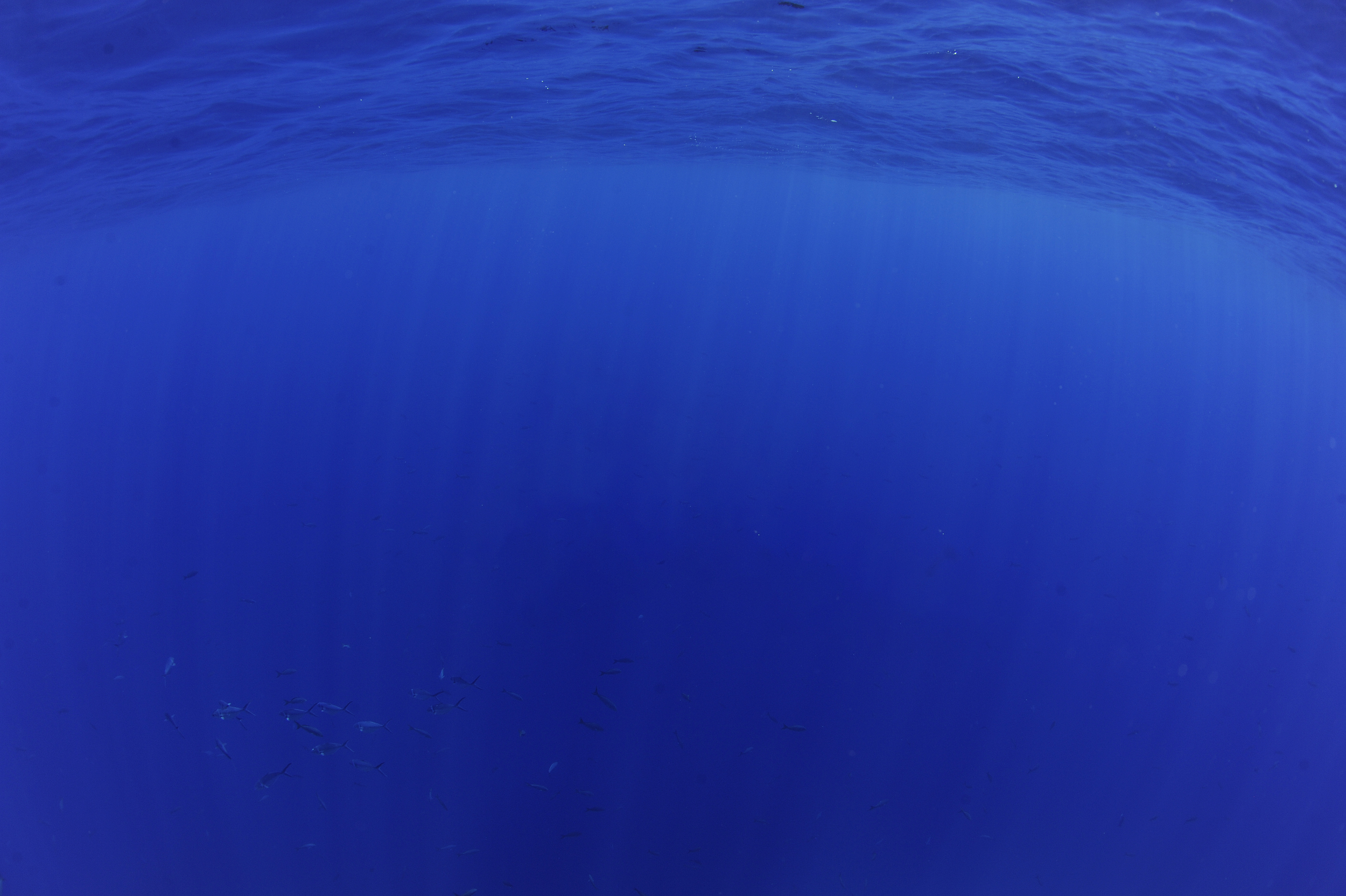
PROJECT LEADER - DR. JOANNA HARRIS
Dr. Joanna Harris is a Marine Scientist, Research Fellow at the University of Plymouth, and the lead of the Manta Trust’s Chagos Manta Ray Project. Her work focuses on the ecology, conservation, and spatial management of reef manta rays in the Chagos Archipelago. Joanna holds a BSc (Hons) in Marine Zoology, a Master’s degree in Marine Science and completed her PhD at the University of Plymouth, where she investigated the environmental drivers of reef manta ray movement and habitat use.
Since taking on the role of project lead in 2019, Joanna has developed and implemented long-term monitoring of reef manta rays in Chagos. Her research employs a combination of photographic identification, acoustic and satellite telemetry, and stable isotope analysis to better understand mobulid habitat use and behaviour. Findings from this work contributed directly to the designation of Egmont Atoll as an Important Shark and Ray Area (ISRA) by the IUCN Species Survival Commission Shark Specialist Group.
In 2024, Joanna formally documented the presence of three devil ray species—the sicklefin (Mobula tarapacana), bentfin (Mobula thurstoni), and spinetail (Mobula mobular) devil rays—in the Chagos Archipelago for the first time, extending the known range of these Endangered species. In addition to her research, Joanna collaborates with fisheries enforcement authorities, UK and US government agencies, and policymakers to address illegal fishing, and her findings have contributed to regional marine spatial planning discussions with the Mauritian government through the Bertarelli Programme in Marine Science.

Key Achievements
Established a photographic ID database which, so far, has documented 328 of the regions Mobula alfredi population.
Deployed satellite tags on 32 individual Mobula alfredi which has provided data on patterns of habitat use as well as feeding and diving behaviour.
Collected tissue biopsy samples for stable isotope analysis to provide information on the dietary preferences of Mobula alfredi in the region so to determine their trophic and movement ecology. Genetic analysis of the samples is also being conducted to identify any connectivity with nearby populations.
Outreach events engaged over 260 personnel, six workshops trained 44 individuals, and 20 Mobulid Ambassadors were appointed, representing diverse groups, including Filipino and Indian contractors, UK and US military personnel, Royal Overseas Police Officers, and Foreign, Commonwealth & Development Office personnel.
SCIENTIFIC PUBLICATIONS
Fine scale oceanographic drivers of reef manta ray (Mobula alfredi) visitation patterns at a feeding aggregation site
March 2021
Joanna L. Harris, Phil Hosegood, Edward Robinson, Clare B. Embling, Simon Hilbourne & Guy M. W. Stevens
Intraspecific differences in short- and long-term foraging strategies of reef manta ray (Mobula alfredi) in the Chagos Archipelago
September 2023
Joanna L. Harris, Clare B. Embling, Genevieve Alexander, David Curnick, Ronan Roche, Niv Froman, Marleen Stuhr, Elaine S. Fileman, Simon Hilbourne, Rebecca Carter, Annie Murray + 2 authors
Spatiotemporal variations in reef manta ray (Mobula alfredi) residency at a remote meso-scale habitat and its importance in future spatial planning
February 2024
Joanna L. Harris, Phil Hosegood, Clare B. Embling, Benjamin J. Williamson & Guy M. W. Stevens
First records of the sicklefin (Mobula tarapacana), bentfin (Mobula thurstoni), and spinetail (Mobula mobular) devil rays in the Chagos Archipelago
February 2024
Joanna L. Harris, Claire Collins, Mark Spalding & Guy M. W. Stevens
The illegal exploitation of threatened manta and devil rays in the Chagos Archipelago, one of the world’s largest no-take MPAs
March 2024
Joanna L. Harris & Guy M. W. Stevens
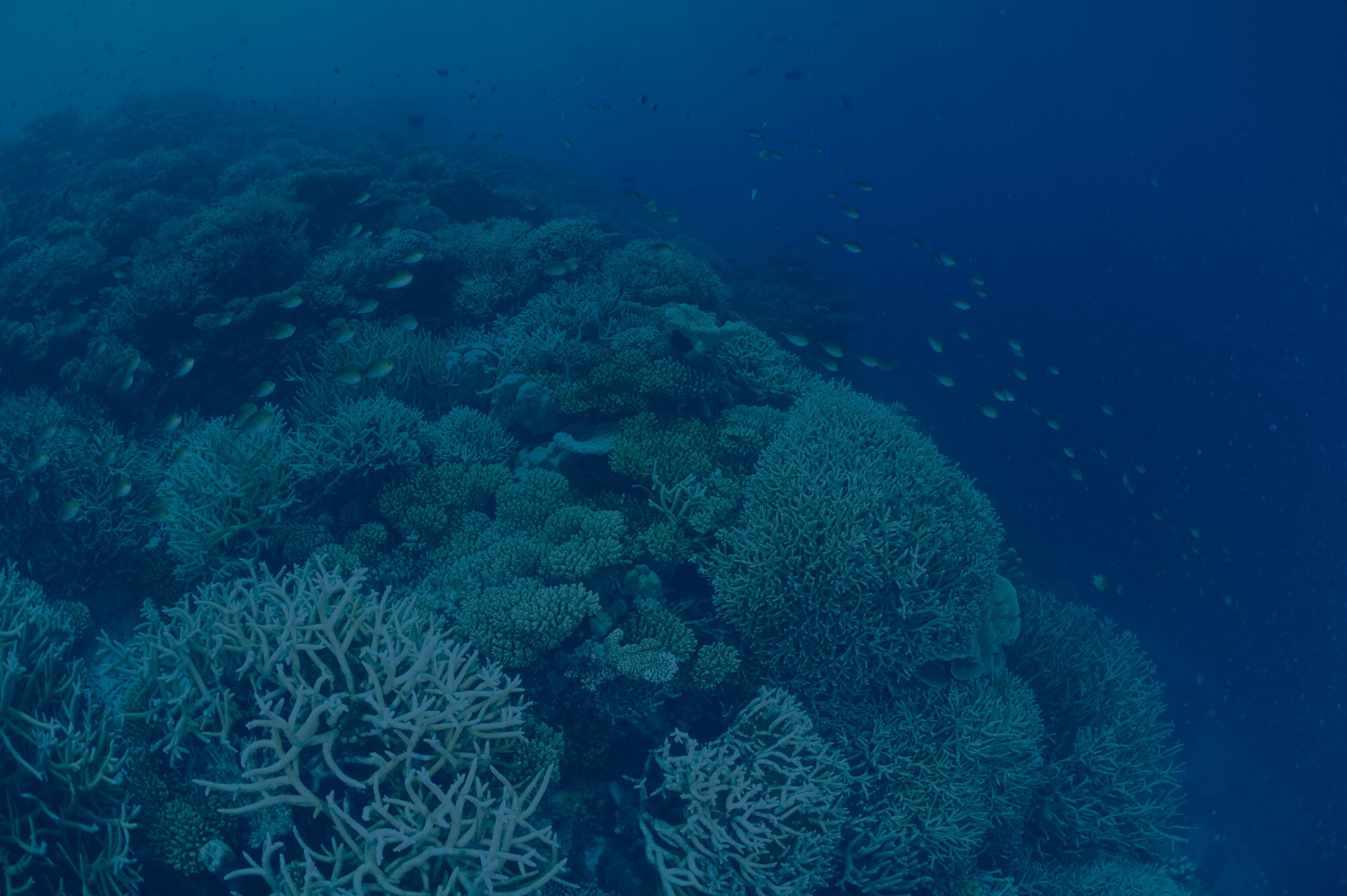
In the Media
£1million research programme explores human impacts on remote marine environment
University of Plymouth
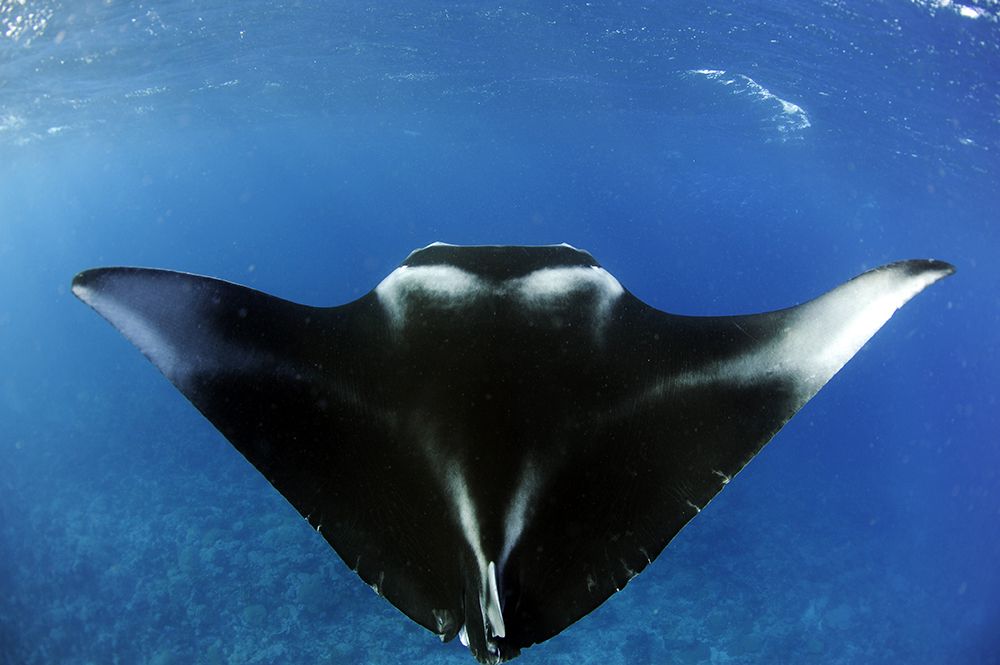
Photos from the field


























